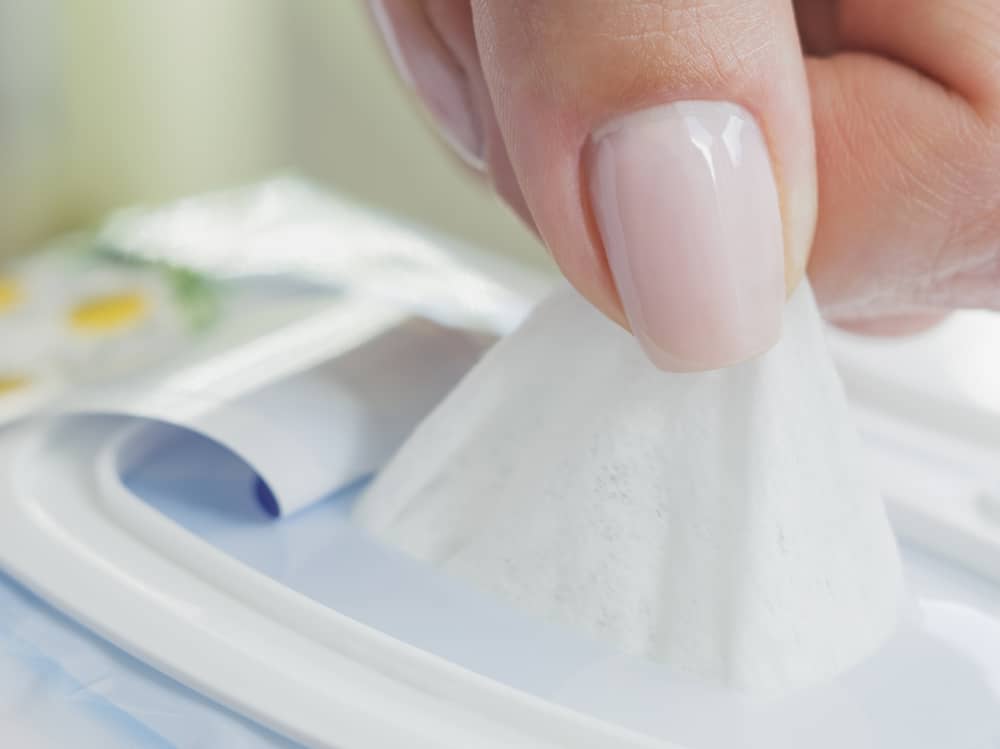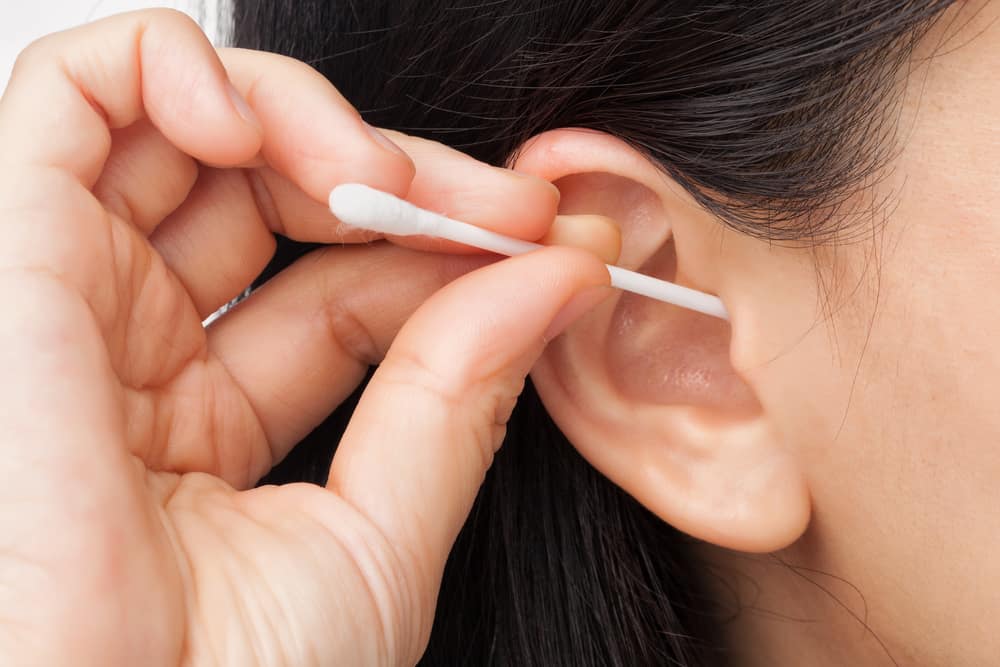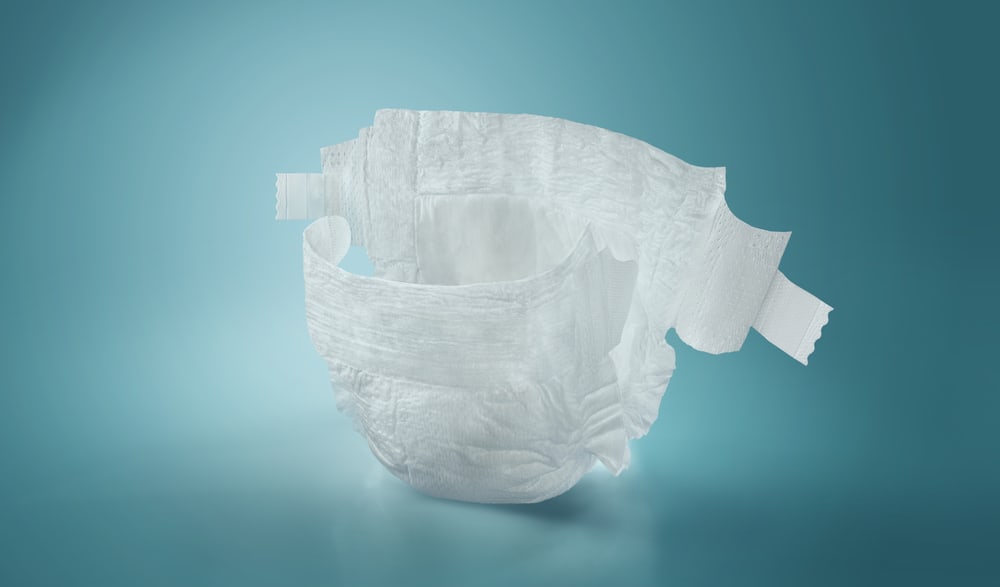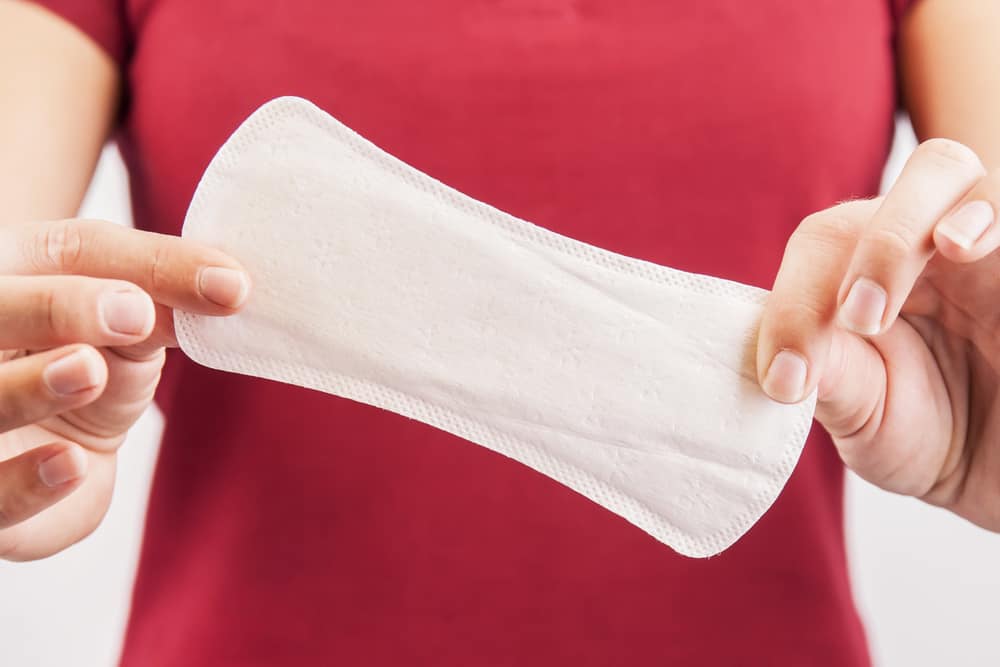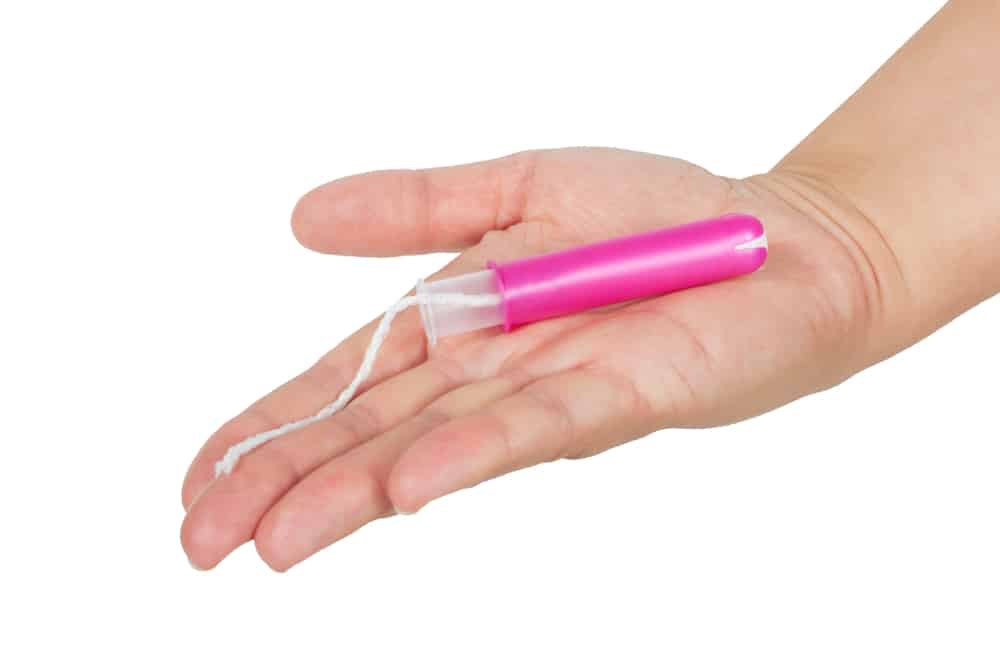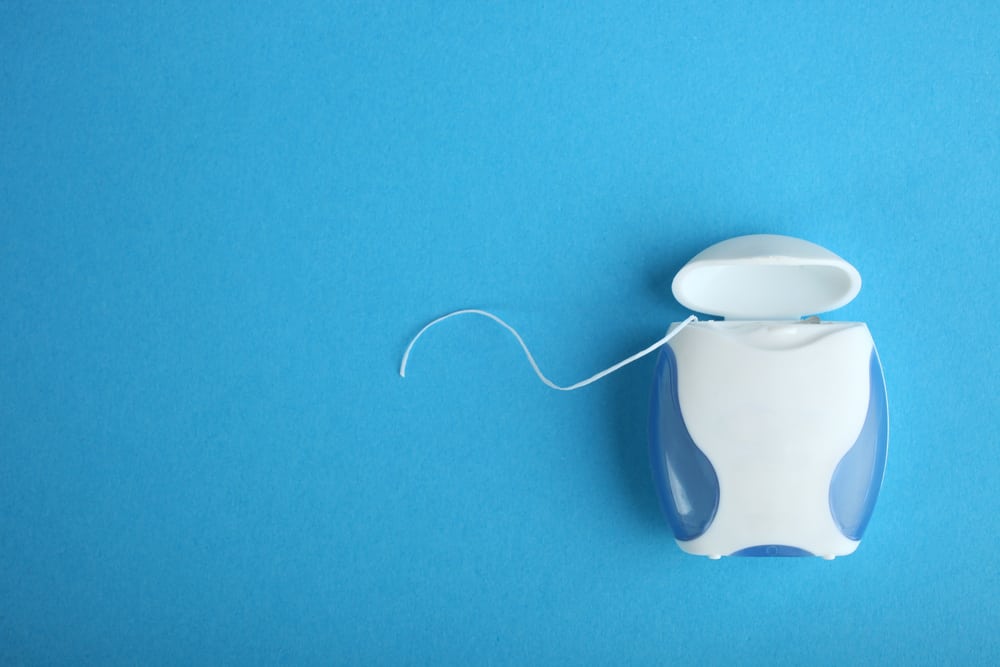According to Ocean Conservancy, approximately 8 million metric tons of plastic goes into the ocean every single year, and 8.5% of that comes from the items we flush down the toilet. Plastic pollution has huge consequences on our environment, such as the release of harmful chemicals, being mistaken for food by animals and even entering our food chain through the fish we eat.
In 2018 we surveyed over 500 people to see exactly how often the items found in sewers and washed up on the UK’s beaches are flushed. The research unveiled the UK’s bad habits when it comes to disposing items down the toilet. The survey showed that people were flushing tampons, condoms, wet wipes, medicines, drugs and more.
In June 2019, our parent company Lanes Group did an almost identical survey with over 1200 UK residents to see if habits had changed since the exposure of a number of UK fatbergs and documentation of the ocean’s rising plastic count. The research showed that people’s efforts toward flushing items have become even worse in some cases.
When items are flushed down the toilet, they are usually diverted to a treatment plant so that waste water can be treated and filtered ready to be released into the environment. However, flushed items like cotton buds can often by-pass the filtering system – entering rivers and eventually the ocean.
Building on the 2018 and 2019 survey, we wanted to see exactly how long the items that are flushed down the toilet would take to biodegrade in sewer and marine conditions. We wanted to ultimately see how long the consequences of the UK’s actions toward flushing would last in the environment.
We created a quiz (above) so that people can see exactly how long all of their flushed items combined would take to biodegrade in a marine environment. We want to educate the public on the consequences of flushing items and reveal the truth of what happens to them after they’ve been discarded down the toilet.
In the following report, you can find out how long each item featured in the quiz would take to biodegrade in the ocean. We’ll also list the materials used to make each item, as well as the results from our 2018 and 2019 survey.
To produce this report, we teamed up with Kirsty-Jo Muddiman – an expert in terrestrial & aquatic toxicology. Kirsty-Jo carried out extensive research which enabled her to estimate how long each material used within 8 commonly flushed items would take to biodegrade in both sewer and marine conditions.
What do biodegradable and microbe mean?
Before we begin to look through the science behind each item, let’s understand exactly what biodegradable and microbe means
Biodegradable, also known as biodegrading and biodegradation, is defined as the process of decay and ultimate reabsorption into the environment. To be termed biodegradable, the literary definition is “capable of decaying through the action of living organisms”.
A microbe is a living microscopic organism that is so small it is invisible to the naked eye and a microscope is needed in order to see them. Microbes come in many forms including bacteria, fungi, viruses and more.
Items Tested
- Wet wipes
Wet wipes are made from non-woven fabric like polyester and according to our 2018 survey, 14.1% of people admit to flushing them down the toilet. However, our 2019 survey shows that 43.3% of people flush ‘flushable’ wet wipes and 10.2% of people flush standard wet wipes.
Many companies claim that their wet wipes are flushable, however, it is estimated that a wet wipe will take approximately 500 years to biodegrade due to the non-woven fabric.
Depending on conditions this may take longer or never occur. Similarly, if microbes acquire the ability to use polyester or other non-woven fabrics as a food source then this time could also reduce.
- Cigarette butts
Cigarette butts are made from paper/cardboard and cellulose acetate fibre, and according to our 2018 survey, 3.7% of the public have flushed cigarette butts down the toilet. This item was not used in our 2019 survey.
Although cardboard is estimated to biodegrade within 2 months, it is estimated that a cigarette butt will take up to 500 years to fully biodegrade due to the cellulose acetate fibre within the item.
Depending on conditions this may take longer. Similarly, if microbes acquire the ability to use cellulose acetate as a food source then this time could also reduce.
- Cotton Buds
Popular cotton buds are made up of cotton, rayon and plastic, and according to our 2018 survey, 5.3% of people admitted to flushing them. Unfortunately, we were able to see from our 2019 survey that the number of people flushing cotton buds has risen to 7.98%.
Cotton itself could take up to 1 year to biodegrade in a marine environment, however, it is estimated that a plastic cotton bud will take up to 500 years to biodegrade due to the plastic stem.
Depending on conditions this may take longer or never occur. Similarly, if microbes acquire the ability to use plastic as a food source then this time could also reduce.
- Nappy
Nappies are made from rayon, sodium acrylate and non-woven fabrics like polyester, and according to our 2018 survey, 5.5% of people admit to flushing them. Thankfully, this has drastically decreased to 0.58% according to our 2019 survey.
Sodium acrylate has the quickest biodegradability potential with an estimation of 1-6 months, followed by rayon which is estimated to biodegrade in up to 1 year. However, Nappies also contain non-woven fabrics such as polyester which can reportedly take up to 500 years to biodegrade.
Therefore, it is estimated that a nappy will take up to 500 years to biodegrade due to the non-woven fabrics it contains.
Depending on conditions this may take longer. Similarly, if microbes acquire the ability to use non-woven fabrics as a food source then this time could also reduce.
- Sanitary Towel
Sanitary towels are made from rayon, cotton and plastic, and according to our 2018 survey, 8.6% of people admit to flushing them. Decreasing slightly, our recent 2019 survey showed that 7.32% of people flush sanitary towels.
Rayon and cotton are estimated to biodegrade in up to 1 year. However, sanitary towels also contain plastic which can reportedly take up to 500 years to biodegrade.
Therefore it is estimated that a sanitary towel will take up to 500 years to biodegrade due to the plastic within the item.
Depending on conditions this may take longer. Similarly, if microbes acquire the ability to use plastic as a food source then this time could also reduce.
- Tampons and applicators
Tampons are made from rayon and cotton, and applicators are commonly made from either cardboard or plastic. According to our 2018 survey, 10.6% of people admitted to flushing tampons and/or applicators.
Our 2019 survey shows that 34.13% of people are flushing tampons while 5.10% are flushing applicators and wrappers.
Rayon and cotton reportedly biodegrade at the same rate of up to 1 year.
It is estimated that a plastic tampon applicator will take up to 500 years to biodegrade and a cardboard applicator would take up to 2 months to biodegrade.
Depending on conditions this may take longer or never occur. Similarly, if microbes acquire the ability to use plastic as a food source then this time could also reduce.
- Condoms
Condoms are made from latex according to our 2018 survey, 4.7% of people admitted to flushing them. Our 2019 survey shows that the amount of people flushing condoms has more than doubled in one year, with 10.03% admitting to it.
It is estimated that a natural latex condom will take between 50 and 100 years to biodegrade. However, a synthetic latex condom may take approximately 500 years to biodegrade.
Depending on conditions this may take longer or never occur. Similarly, if microbes acquire the ability to use food as a food source then this time could also reduce.
- Dental Floss
Dental floss is made from Nylon (plastic) and wax (petroleum), and according to our 2018 survey, 8.2% of people admit to flushing it. This item was not used in our 2019 survey.
Wax is estimated to biodegrade in 1 to 6 months in a marine environment, however, Nylon is a form pf plastic and therefore it may take up to 500 years for it to biodegrade.
Therefore it is estimated that dental floss takes approximately 500 years to biodegrade in a marine environment.
Depending on conditions this may take longer or never occur. Similarly, if microbes acquire the ability to use plastic as a food source then this time could also reduce.
Materials
Each of the 8 items we tested contains a number of materials that have individually been researched in order to provide us with an estimated biodegradation rate for each of the 8 items we tested.
Paper/cardboard (cigarette butts and cardboard tampon applicators)
Paper and cardboard are 100% biodegradable and do not require light to begin decomposition. Biodegradation occurs quicker in wet environments rich in microbes, therefore, it is estimated that paper and cardboard can biodegrade within 2 months in a marine environment. Other chemicals present in the paper or card composition can also affect the rate of degradation.
Cellulose acetate fibre (cigarette butts)
Cellulose acetate is a chemical modification of the natural polymer, cellulose. Cellulose is biodegradable but the chemical addition of acetate renders cellulose acetate non-biodegradable. Like plastic, cellulose acetate requires chemical modification before microbes can begin the process of biodegradation.
Once de-acetylation has been accomplished (either chemically or by microbes) then the cellulose “backbone” is, in theory, readily biodegraded. Photochemical degradation (caused by light) can break down the fibres into smaller pieces but the source material never disappears which implies a total lack of ultimate biodegradation.
Additionally, a lack of chromophores in the chemical structure which would absorb the UV light required for photodegradation, means that in reality any photo-chemical breakdown is minimal and either extremely slow and/or ineffective. For this reason, it is not currently possible to establish how long cellulose acetate takes to fully biodegrade in the marine environment. An arbitrary figure of up to 500 years is applied but the truth is that it could actually take a lot longer. Similarly, if microbes acquire the ability to use cellulose acetate as a food source then this time could also reduce.
Cotton (cotton buds, sanitary towels and tampons)
In composting conditions, woven cotton fabric lost approximately 50-77% by weight in 100 days. Degradation was observed to be faster under elevated temperature and microbial activity. In terms of the UK sewage system and marine environment, elevated temperature cannot be applied to establish biodegradation due to the UK climate, sea temperature and the depth of the sewage network (no significant temperature elevation would be anticipated). It is therefore concluded that the degradation of cotton would exceed 100 days but less than 1 year.
Rayon (cotton buds, nappies, sanitary towels, tampons)
Rayon/viscose fibres are fully biodegradable in a range of natural environments. Existing claims state that rayon/ viscose has comparable biodegradation to cotton.
Thus, it is concluded that Rayon is likely to take up to 100 days and less than 1 year to biodegrade.
Plastic (cotton buds, dental floss, nappies, sanitary towels, wet wipes, tampons and applicators)
The physical structure of plastic must be compromised before significant microbial degradation can begin.
First, the physical breakdown must occur, and then microbial degradation can theoretically begin. Experimentally, PET (Polyethylene terephthalate) has shown over 60% degradation in specific conditions from a starting particle size of 0.212mm, but in reality, this is simulatory of a process which can only occur much further into the future when the plastic has physically broken down into microparticles.
Nylon 4 may have the potential to biodegrade in the marine environment, more traditional and cheaper nylons, such as Nylon 6, are subject to the same physical and chemical structure restrictions as PET.
Marine environment biodegradation of plastic is both light and temperature dependent and thus only an arbitrary figure is appropriate to apply; it cannot currently be established how long plastic takes to fully biodegrade in the marine environment. An arbitrary figure of up to 500 years is given. However, this could actually take a lot longer or never actually occur.
In the sewage system environment, it must be concluded that biodegradation is unlikely to occur at all due to the lack of light, the ambient temperatures and a lack of abundance in microflora capable of plastic metabolism.
Similarly, if microbes acquire the ability to use plastic as a food source then this time could also reduce.
Latex (condoms)
Latex can be defined as a polymer and under the EU definition is also considered to be plastic, whether “natural” starting materials are used or not. Latex structurally deconstructs (biodeteriorates) in the aqueous environment, and as with plastics, requires photo-chemical (breakdown through light) reaction to achieve this. The rate of biodeterioration is affected by the thickness of the latex and also the light intensity.
It does appear that naturally occurring microbes are capable of natural and synthetic latex decomposition although it is unclear whether full biodegradation is possible.
An arbitrary figure which assumes microbial biodegradation after biodeterioration/photochemical change of between 50 and 100 years is applied to natural latex as data does support this likelihood.
Synthetic latex, however, is considered to have the confines of “plastics” with regard to biodegradation. Therefore an arbitrary figure of up to 500 years is applied. However, this could actually take a lot longer. Similarly, if microbes acquire the ability to use plastic as a food source then this time could also reduce.
Sodium Acrylate (nappies)
Sodium acrylate, in its polymer form, was found to be biodegraded by bacteria isolated from activated sewage sludge in 5 days.
The test was undertaken in laboratory conditions using isolated bacteria and so an arbitrary time of between 1 and 6 months is applied to take into consideration the diverse microbial population in the sewage system and possible environmental factors, such as temperature.
Wax (dental floss)
Biodegradation of paraffin (petroleum) wax is theoretically possible and has been demonstrated to be undertaken within 28 days in a regulated guideline study.
It is therefore concluded that biodegradation of paraffin wax is probable and an arbitrary time of between 1-6 months is applied to take into consideration the diverse microbial population in the sewage system and possible environmental factors, such as temperature.
Conclusion
Materials largely fell into two groups; those which could be defined as ultimately biodegradable from supporting data, and those for which it was not possible to confirm whether full and true biodegradation was possible without human intervention (plastic).
This research has highlighted how long the items we commonly flush approximately take to be re-observed in the environment. It’s also shown that the majority of products that were tested contain some form of plastic, which means items can take up to 500 years to biodegrade in marine conditions, with the potential of never actually biodegrading.
There is no UK legislation covering the disposal of goods down the domestic sewage system, but it is vital to only flush the three P’s down toilets: Pee, Poo & Paper. All other items, including the 8 items listed above, must be disposed of in the bin. Making these small changes and using products that contain less plastic can make a big difference to our oceans and rivers, as well as reducing the number of blocked drains and sewers.
Read about our dirty dozen campaign for more information on what you should and shouldn’t flush.
Unblocktober
If you haven’t gathered it already, we’re passionate about educating the public on what should and shouldn’t go down the toilet. We see first-hand what happens when homes and businesses flush items or pour things down the drain that shouldn’t be – fatbergs, blocked drains, flooding, not to mention the effects it has on the environment.
This October, we challenge you to not pour any FOGs (fat, oil and grease) or food down your sinks and not flush anything apart from the 3 Ps – pee, poo and paper.
If we can stop the incorrect disposal of FOGs and food in kitchens, we can prevent fatbergs affecting our local infrastructure and environment. And if we can stop the incorrect disposal of plastic and items containing hidden plastic in our bathrooms, we can reduce the amount of plastic entering our bodies of water.
You can make a BIG difference by making SMALL changes to your bathroom and kitchen habits. For more information and educational resources visit the Unblocktober website.
Sources:
ASTM International, . (2015). D5338-15 Standard Test Method for Determining Aerobic Biodegradation of Plastic Materials Under Controlled Composting Conditions, Incorporating Thermophilic Temperatures. West Conshohocken, PA: ASTM.
C More. (1993). Marine Debris Biodegradation Timeline. Mote Marine Laboratory. Retrieved from http://cmore.soest.hawaii.edu/cruises/super/biodegradation.htm
Chemistry, R. S. (2019). ChemSpider data base. Royal Society of Chemistry.
Clark, T. (n.d.). Advancements in Rubber Disposal: Biodegradation and the Environment. Retrieved 2019, from https://www.linkedin.com/pulse/20140501222120-11496812-advancements-in-rubber-disposal-biodegradation-and-the-environment/
Comission, E. (2016). Union Guidelines on Regulation (EU) No 10/2011 on plastic materials and articles intended to come into contact with food v1.1. European Comission.
Comnea-Stancu, I. R. (2017). On the Identification of Rayon/Viscose as a Major Fraction of Microplastics in the Marine Environment: Discrimination between Natural and Manmade Cellulosic Fibers Using Fourier Transform Infrared Spectroscopy. Applied Spectroscopy, 71(5). doi:10.1177/0003702816660725
DEFRA. (2002). Sewage Treatment in the UK. Department for Food and Rural Affairs. Retrieved 2019, from https://assets.publishing.service.gov.uk/government/uploads/system/uploads/attachment_data/file/69582/pb6655-uk-sewage-treatment-020424.pdf
ECHA. (2017). CoRap Evaluation Decision Quaternary ammonium compounds. ECHA. Helsinki: ECHA. Retrieved from https://echa.europa.eu/documents/10162/a229d8c4-1f47-4464-510c-3d5a0db59a8f
ECHA. (2019). ECHA Database. Helsinki: http://echa.europa.eu/.
EDANA. (2018). Viscose and lyocell fibres are wood-based cellulose fibres and. EDANA. Brussels: EDANA. Retrieved from https://www.edana.org/docs/default-source/default-document-library/edana-statement-on-degradability-of-regenerated-cellulose-2018485f3dcdd5286df88968ff0000bfc5c0.pdf?sfvrsn=2
EPA, U. (2010). BIOWIN v 4.10. US EPA.
EPA, U. (2012). EPI Suite . US EPA.
European Union. (2009, December 22). Regulation (EC) No 1223/2009 of the European Parliament and of the Council of 30 November 2009 on Cosmetic Products. Official Journal, 342, 59. Retrieved from https://eur-lex.europa.eu/legal-content/EN/TXT/PDF/?uri=CELEX:02009R1223-20160812&from=EN
Farzi, A. (2019, January). Biodegradation of polyethylene terephthalate waste using Streptomyces species and kinetic modeling of the process. Biocatalysis and Agricultural Biotechnology, 17, 25-31. doi:https://doi.org/10.1016/j.bcab.2018.11.002
Federal Trade Commission, USA. (2012). Guides for the use of environmental marketing claims; Final rule. National Archives and Records Andministration.
Government of Canada. (2018, November 17). Notice with respect to certain quaternary ammonium compounds in Canadian commerce — Phase 1. Canada Gazette, 152(46). Retrieved from http://gazette.gc.ca/rp-pr/p1/2018/2018-11-17/html/notice-avis-eng.html
Hanstveit, A. O. (1992, August). Biodegradability of petroleum waxes and beeswax in an adapted CO2 evolution test. Chemosphere, 25(4), 605-620. doi:https://doi.org/10.1016/0045-6535(92)90291-X
Hee Park, C. (2004). Biodegradaibility of cellulose fabrics. Journal of Applied Polymer Science. doi:https://doi.org/10.1002/app.20879
Lambert, S. (2013, March). Effects of environmental conditions on latex degradation in aquatic systems. Science of the Total Environment, 447, 225-234. doi:https://doi.org/10.1016/j.scitotenv.2012.12.067
Lavers, J. (2019, May 16). Significant plastic accumulation on the Cocos (Keeling) Islands, Australia. Nature, 9(7102). Retrieved from https://www.nature.com/articles/s41598-019-43375-4#ref-CR8
Lili, L. (2010). Biodegradability Study on Cotton and Polyester Fabrics. Journal of Engineered Fibres and Fabrics, 5(10). Retrieved from https://www.jeffjournal.org/papers/Volume5/5-4-6Frey.pdf
madehow.com. (n.d.). Cotton Swab. How products are made: Cotton swab, 4. Retrieved 2019, from http://www.madehow.com/Volume-4/Cotton-Swab.html
madehow.com. (n.d.). Disposable diaper. Retrieved 2019, from http://www.madehow.com/Volume-3/Disposable-Diaper.html
Marino, F. (1998, December). Biodegradation of paraffin wax. Retrieved from https://www.collectionscanada.gc.ca/obj/s4/f2/dsk1/tape8/PQDD_0030/MQ50640.pdf
Matsumura, S. (1990). Biodegradation of Poly[(sodium acrylate)-co-(2-cyclohexen-1-one). Organic builders, 39(4), 245-249. Retrieved from https://www.jstage.jst.go.jp/article/jos1956/39/4/39_4_245/_pdf/-char/ja
Niu, J. (2012, November 12). Biodegradability of cellulose fibers and the fabrics in activated sludge. Applied mechanics and materials, 217-219, 918-922. doi:https://doi.org/10.4028/www.scientific.net/AMM.217-219.918
Novotny, T. (2009, May). Cigareetes Butts and the Case for an Environmental Policy on Hazardous Cigarette Waste. International Journal of Environmental Research and Public Health, 6(5), 1691-1705. doi:10.3390/ijerph6051691
Puls, J. (2011, March). Degradation of Cellulose Acetate-Based Materials: A review. Journal of polymers and the environment, 19(1), 152-165. Retrieved from https://link.springer.com/article/10.1007/s10924-010-0258-0
reference.com. (n.d.). What is dental floss made of? Retrieved 2019, from https://www.reference.com/health/dental-floss-made-dd9db6f2c221947e
Shah, A. A. (2013, September). Biodegradation of natural and synthetic rubbers: a review. International biodeterioration & biodegradation., 83, 145-157. doi:https://doi.org/10.1016/j.ibiod.2013.05.004
Tachinbana, K. (2013). Biodegradability of nylon 4 film in a marine environment. Polymer degradation and stability, 98(9). doi:https://doi.org/10.1016/j.polymdegradstab.2013.05.007
Tokiwa, Y. (2009, August 26). Biodegradaibility of Plastics. International Journal of Molecular Science, 10(9), 3722-3742. Retrieved from https://www.ncbi.nlm.nih.gov/pmc/articles/PMC2769161/
Tosetto, L. (2017, January). Trophic transfer of microplastics does not affect fish personality. Animal behaviour, 123, 159-167. doi:https://doi.org/10.1016/j.anbehav.2016.10.035
verywellhealth.com. (n.d.). Facts about condom additives. Retrieved 2019, from https://www.verywellhealth.com/wondering-what-condoms-are-made-of-906749
Waste Management Australia. (n.d.). Cigarette butts. Retrieved 2019, from https://wastemanagementausttralia.weebly.com/cigarette-butts.html
wikipedia.org. (n.d.). Sanitary napkin. Retrieved 2019, from https://en.wikipedia.org/wiki/Sanitary_napkin
wikipedia.org. (n.d.). Tampon. Retrieved 2019, from https://en.wikipedia.org/wiki/Tampon
wikipedia.org. (n.d.). Wet wipe. Retrieved 2019, from https://en.wikipedia.org/wiki/Wet_wipe
Yorkshire Water. (n.d.). Flushing wipes, blocks pipes! Retrieved 2019, from https://www.yorkshirewater.com/blockage

